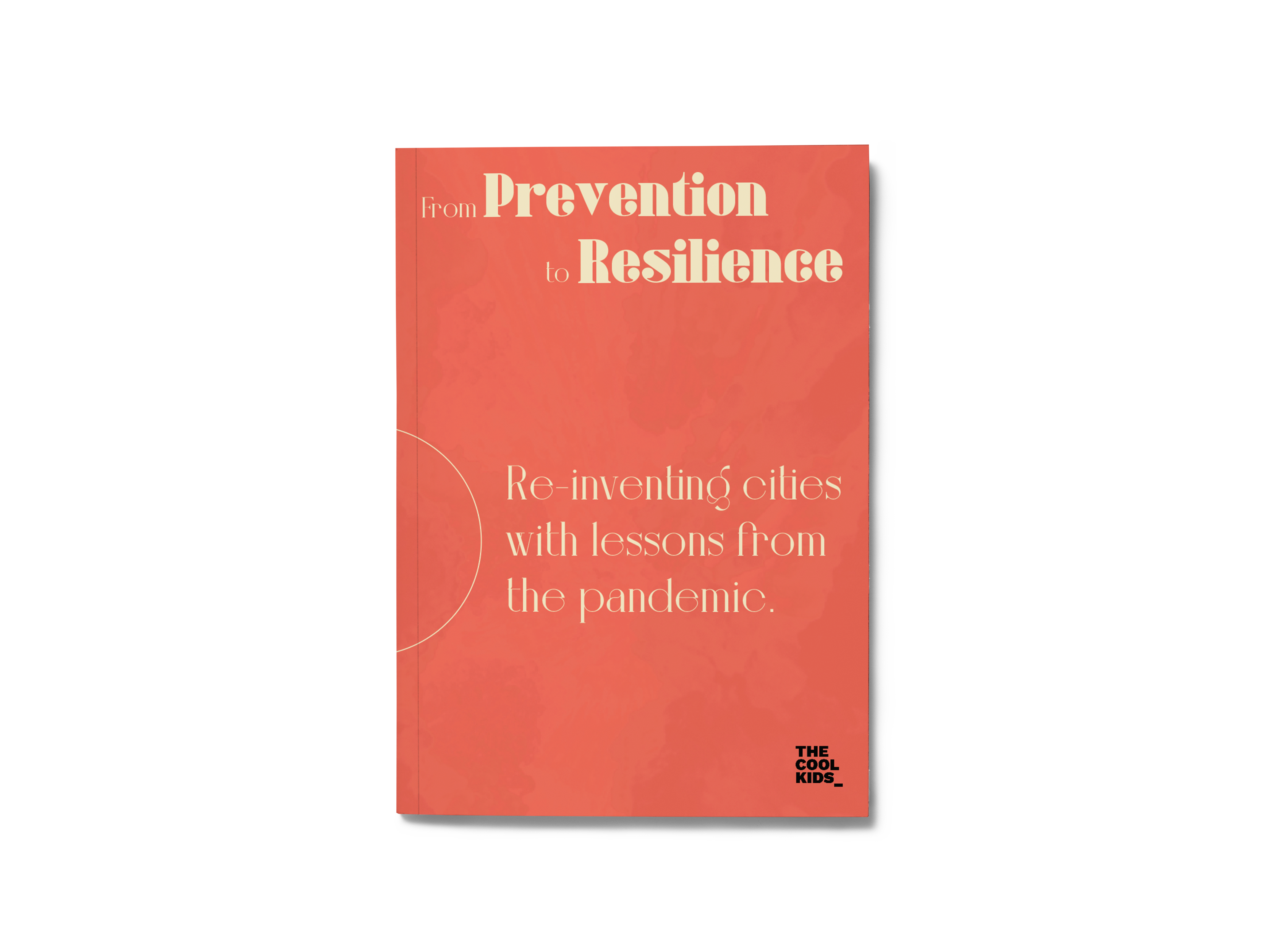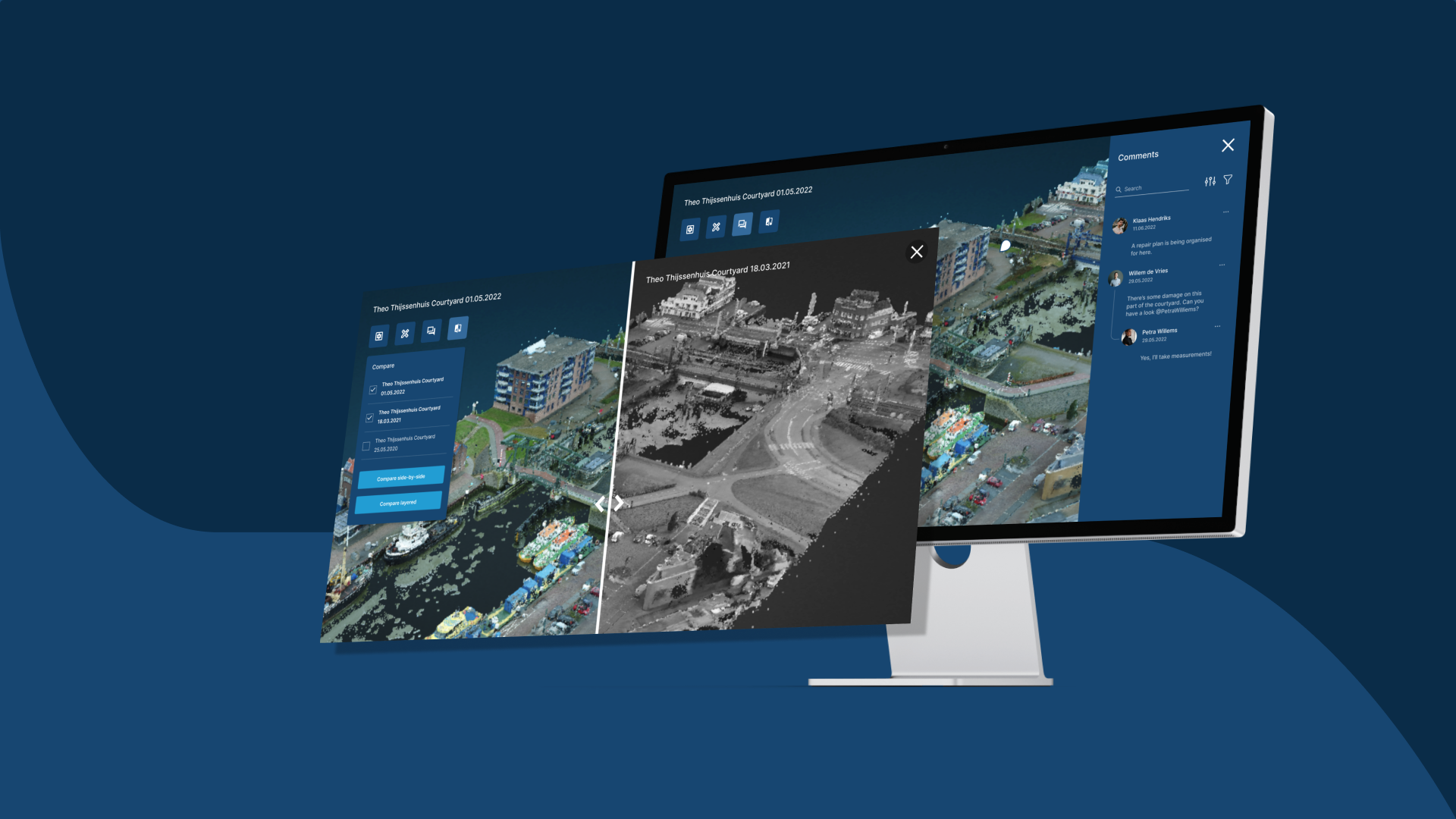
RIDE
The ultimate skateboarding hub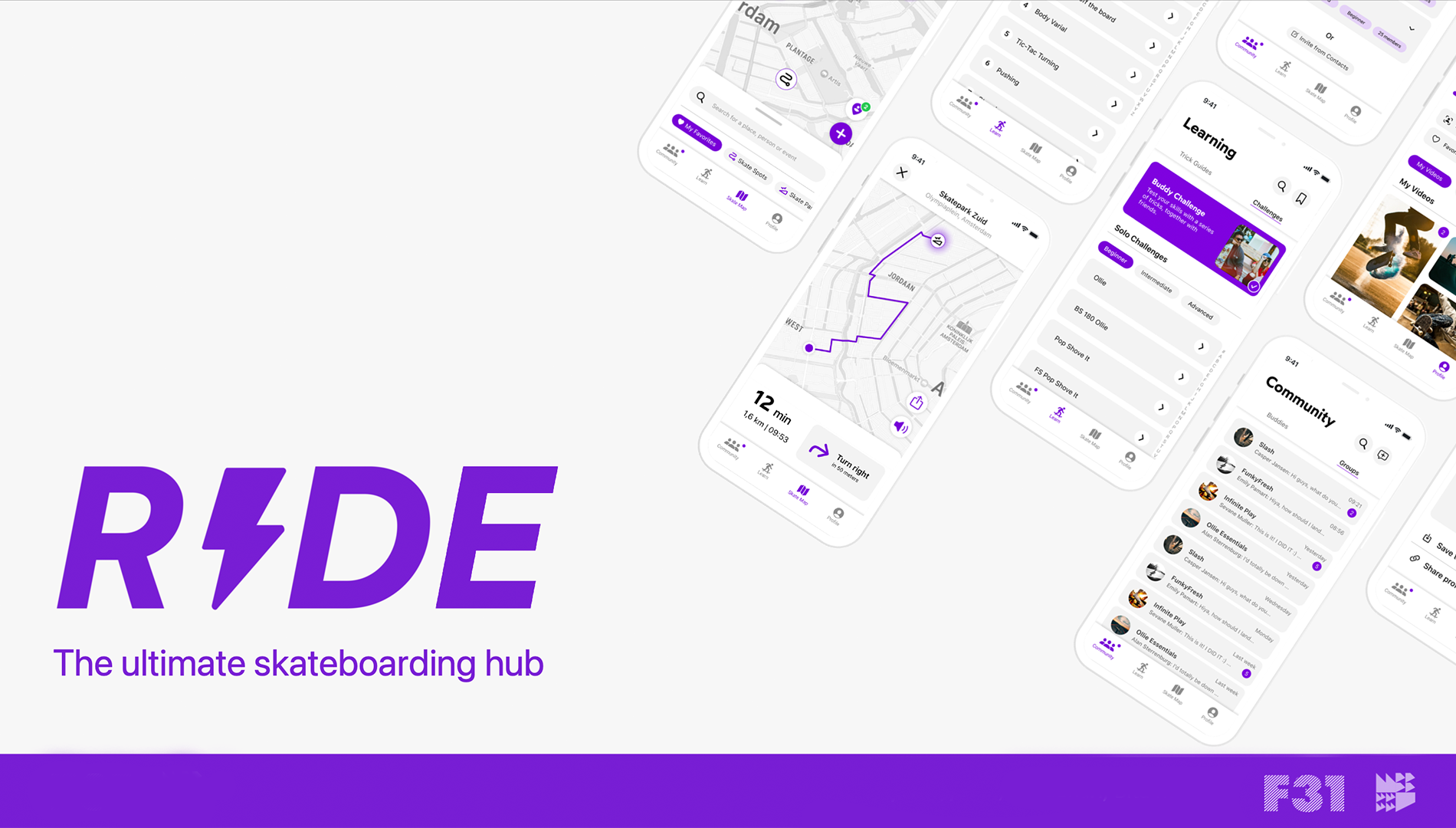
-
Client:
Floda31
- Team:
-
Disciplines:
Concept, UX/UI, Visual Design
-
Schoolyear:
2021 - 2022
Skateboarding, once a small hobby for surfers when waves were low, has now grown into an Olympic sport that many love to put their time in. We were asked to create a digital layer to support this predominantly physical activity. From our conversations with skateboarders, we were faced with three major challenges we could help with. They told us they lack a way to find new places to skate, as well as people to skate with. Lastly, when they’re learning, they would love to be able to receive reliable feedback on their movements.
Following our interviews, we pinned our three main focus areas:
1. The Skateboarding Community is key for skateboarders. However, finding people to skate with, or even a larger community is difficult; especially for beginners and immigrants.
2. Learners think that the progress of the learning slows down over time – even though it does not. Coaches agree that this negative learning curve reduces the skater's motivation. Especially when they want to learn a professional trick.
3. Skaters complained about finding suitable skate spots that are occupied by non-skaters. The lack of an exclusive skate park for skaters is one of the challenges that they experienced.
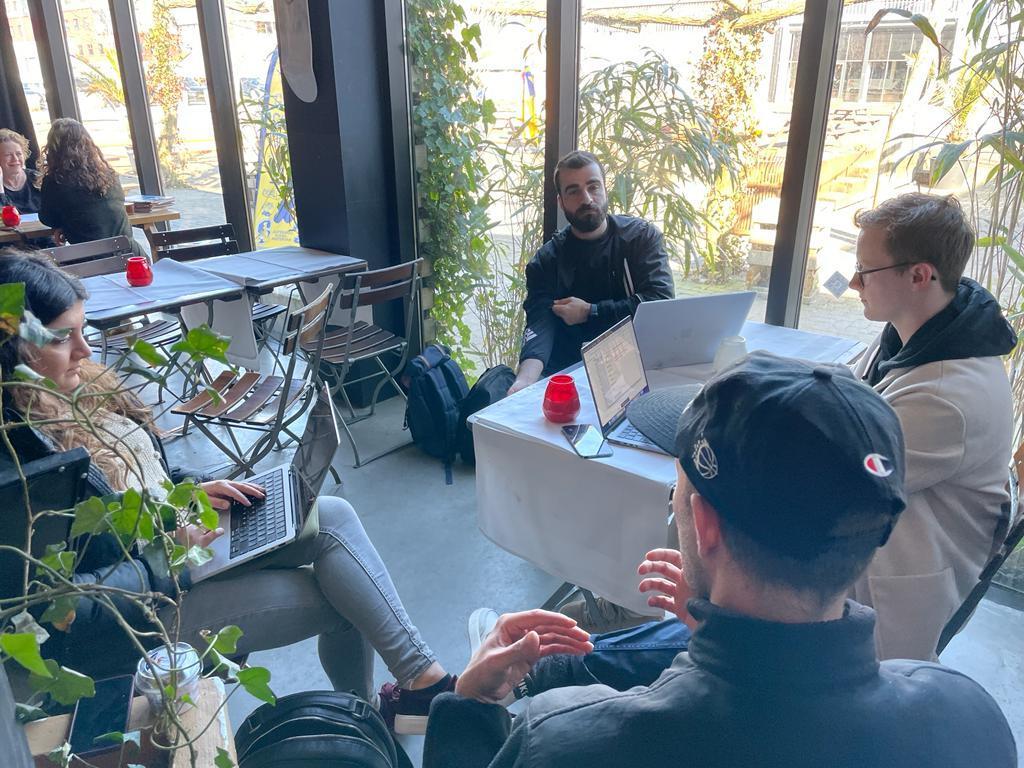
Our design decision was aimed at facilitating the learning process for skateboarders through a structured instructional skating programme, as well as the ability to send and receive constructive feedback within the community of skaters. The process should be motivating for the skater and stimulate physical activity for both beginners and advanced skateboarders through an application that seamlessly fits in their current skateboarding habits.
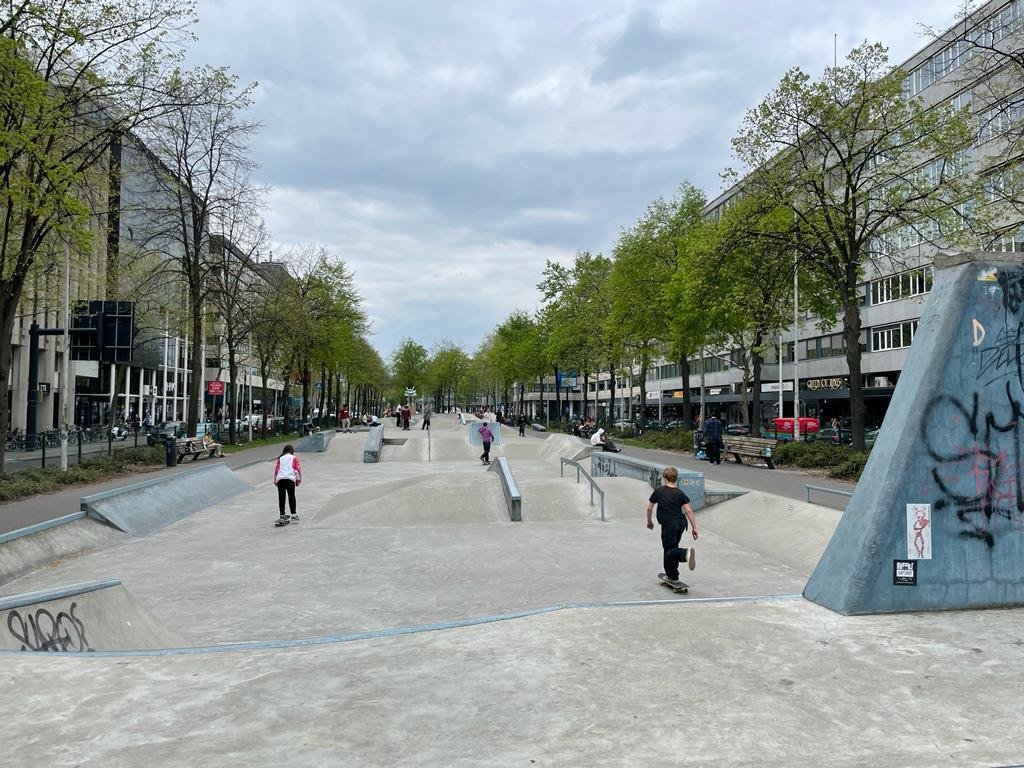
To understand the core of skateboarding we started to learn the basics ourselves, with the help of a professional coach. This supported us in understanding how we can improve the experience of the beginner skateboarders in particular.
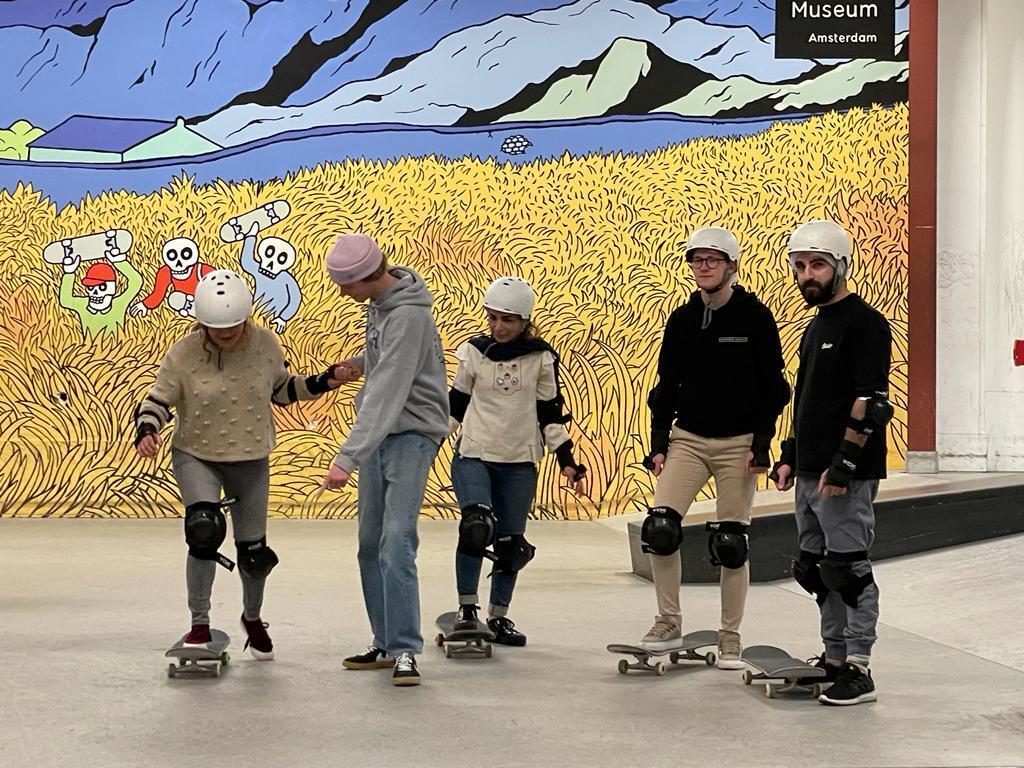
Getting the wheels spinning
Skateboarders who we talked with learned skateboarding in different ways. Some of them learned from a friend, some from a coach, and the majority of them learned from the videos on platforms like YouTube. To make the process of learning easier and more fun for skaters we have implemented the following features in the app;
- Instruction-based skateboarding learning program
We created a feature where skateboarders can learn skateboarding step based. This feature is provided to help the skateboarders learn skateboarding from a very basic level to an advanced level. The tricks are presented by videos, photo sequences, and step-by-step explanations.
- Feedback system
Taking videos and checking the performance is a crucial part of the skateboarding community. Most of the skateboarders we talked to said that they record themselves while doing a trick and later review it to improve their performance. According to sports professionals, feedback is the most crucial tip for learning. It has been found that constructive and meaningful feedback can lead to successful teaching and learning as well as to personal satisfaction.
For that, we have added a feature where skaters can record themselves and share their video performance with the community (via groups or individually), then they can receive targeted feedback on specific areas of their movement.
- Challenge system
Challenges make the learning process more fun and it motivates skaters to learn new tricks. In our application, we have added a feature where skaters can do solo challenges or a challenge with a skater buddy. This way they learn new tricks and continue to do so.
Skating and community
Community matters, as skateboarders mentioned: “Community is key” or “All skaters are our friends”. It not only helps the learning process but also motivates them to practice more as well as have fun. We included the community, which consists of a buddy system and groups of skaters. The Buddy system helps the skateboarders to find buddies to skate with. Groups are provided to be used for assisting skaters, making connections with other skaters , and participating in activities with them.
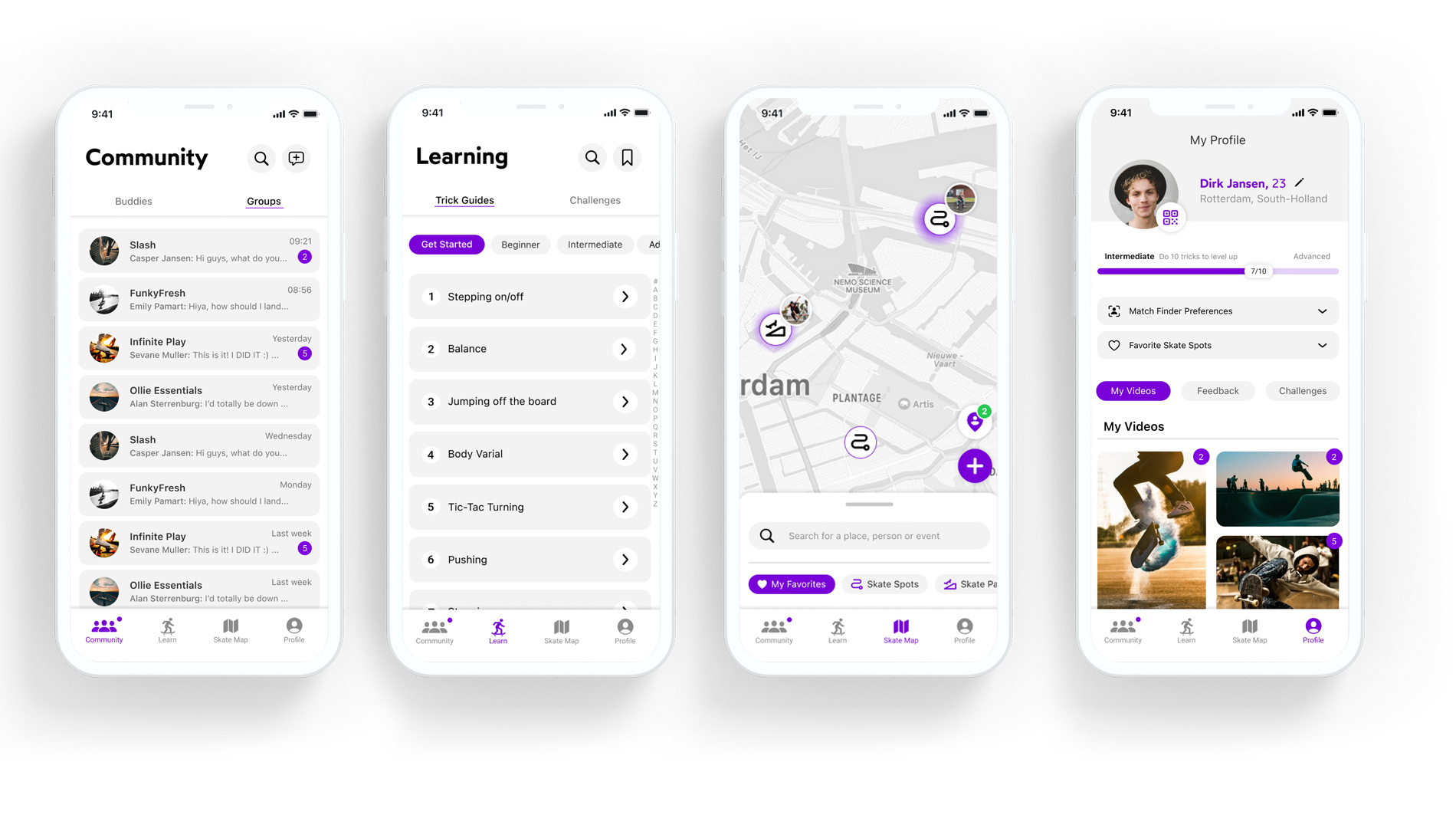
Where are my skaters at?
Finding skateparks or spots is not always easy. To address this problem we implemented a Skate Map, which is enriched with user data and dynamic information such as crowdedness. On the Skate map, the user can find new places to skate in the preferred neighborhood and see how busy they are. The users can also see the location of their buddies while they are skateboarding.
Many skateboarders told us they do not skate on the streets (as a mode of transport) as much as they do in parks, due to the road infrastructure often not being suitable. For this reason, we added a route-planning feature to the map, which shows the smoothest – not the fastest – roads to get to your given destination.
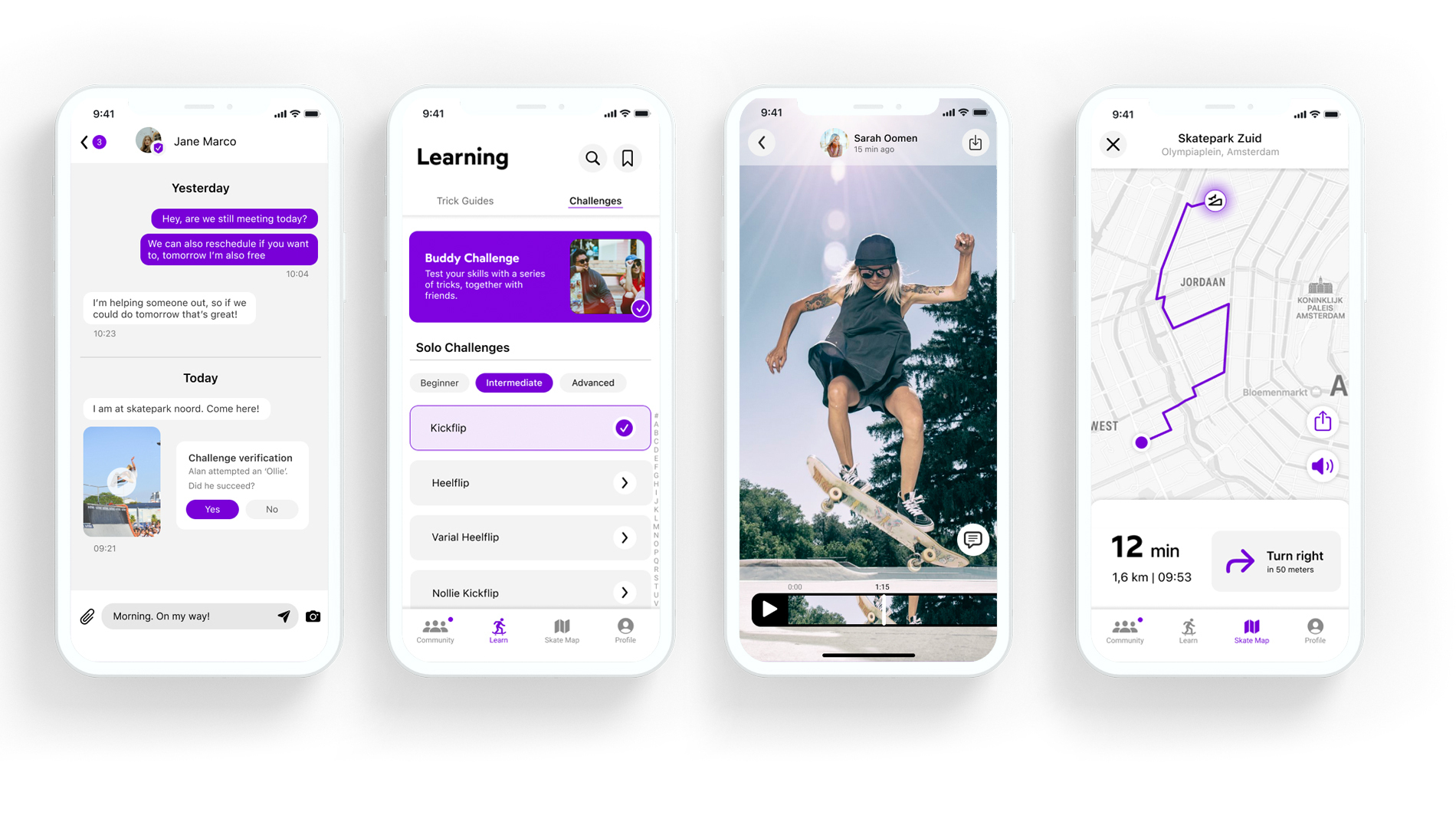
With RIDE, we are facilitating the learning process, as well as fostering the connection between skateboarders and their friends or coaches.

